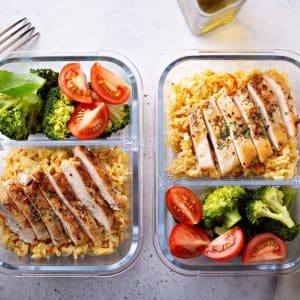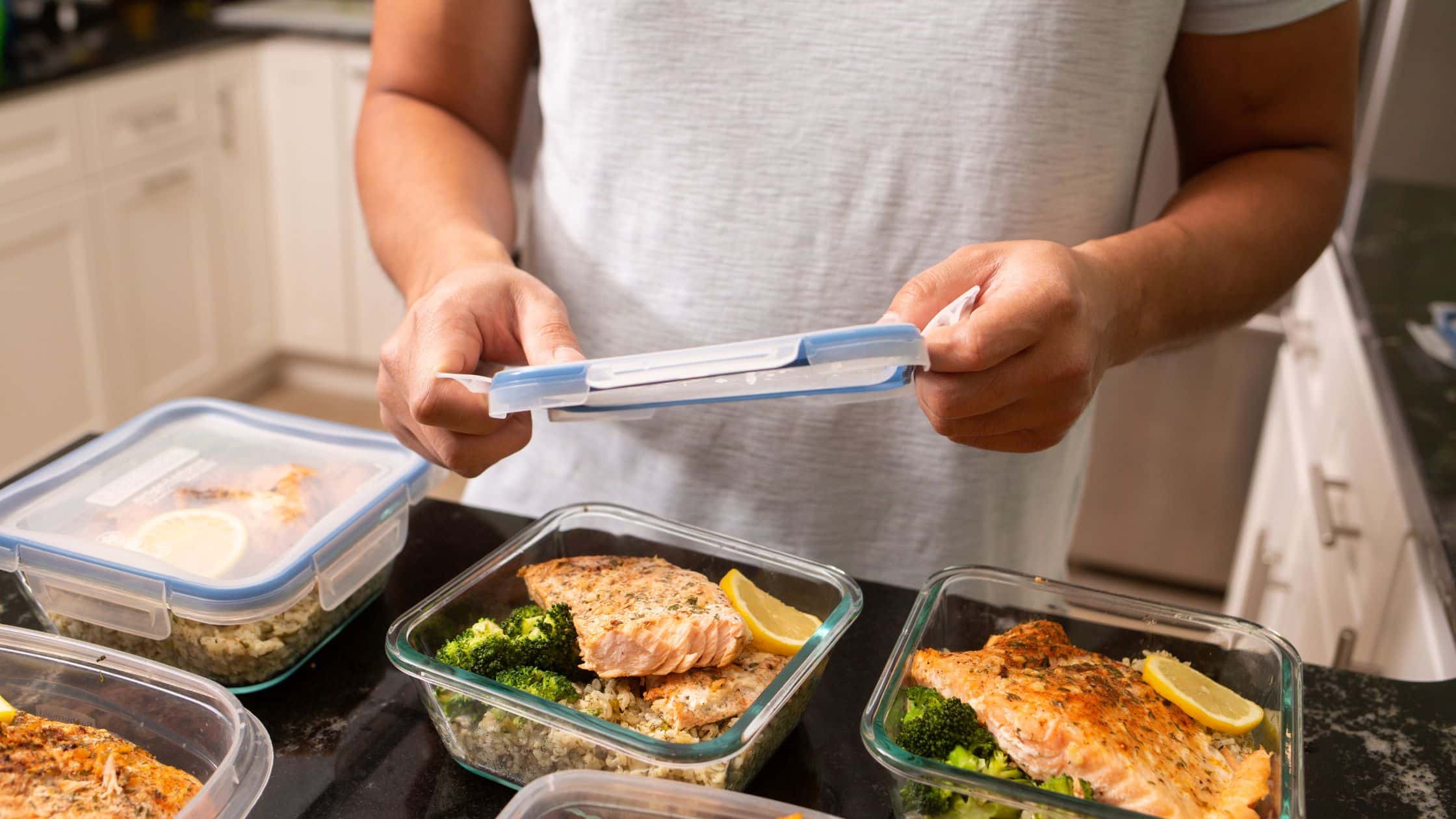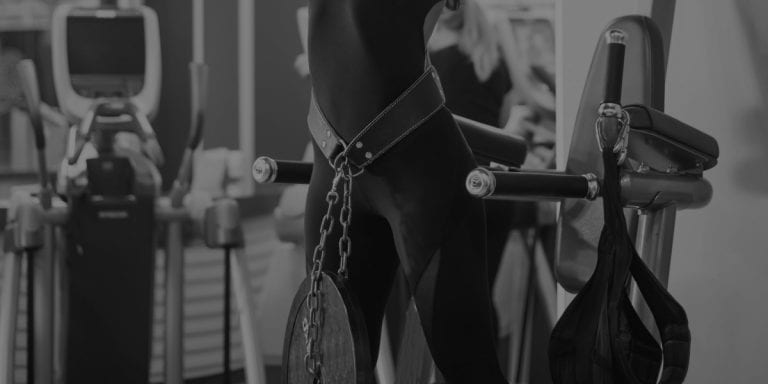Bulking On A Budget
Check out Ben Hardman’s top 5 ways for effective bulking on a budget, to make those wallet gains as well as muscle gains.
Want to pack on serious muscle without breaking the bank? Concerned that you’re going to be spending a lot more money on food to pack on the kilograms and make gains?
With the right approach, you can absolutely gain mass and bulk up on a budget. It doesn’t necessarily have to be any more expensive than your usual diet or when you’re cutting.
This guide will take you through the best money-saving ways for bulking up successfully, helping you to build strength and size affordably.
Understanding calories and macros first

For a proper bulk you’re going to need to consume extra calories. Generally, this means more food so you’re in a calorie surplus.
Being in a calorie surplus just means eating more calories than your body burns through. This provides your body with extra energy and macronutrients to grow and pack on mass. It’s how people build muscle. It’s also how people put on unwanted weight.
With a calorie surplus, there’s no upper limit here. But you’ll need one. To make this affordable, as well as controlled, it’s important to track calories – at least initially while you get to grips with everything.
A good, modest starting point for a calorie surplus is about 10% above your normal calorie maintenance level. If you don’t know what your basic calorie maintenance levels are, there are tonnes of calculators you can use. Put in a few details like age, sex, current weight and levels of activity, and you’ll get back a good estimate of how many calories it takes to be in maintenance mode.
A calorie surplus that’s less than 10% and you probably won’t notice much difference. You can increase these levels up to, say, 20%, but you risk putting on more body fat than you might like.
Ok, you’ve got the calories, now onto how these are split up and consumed via macronutrients.
You’ll need to focus on taking in plenty of protein, complex carbohydrates and healthy fats. A good rule of thumb for a bulking diet is the 40/40/20 rule – 40% of calories from carbs, 40% from protein and 20% from healthy fats.
1. Choose the most affordable bulking foods
So, you’ve got a basic calorie and macro layout. Now for the foods.
Extra bulking foods can certainly add a few pounds to your weekly shop. But choosing the right budget-friendly foods can help you gain mass in an affordable way.
Here are some of my favourite food sources when on a bulk:
- Chicken breast – An extremely versatile and affordable lean protein source.
- Frozen white fish – Usually fish such as pollock, which are high-in-protein foods. Pollock is one of the more sustainable species of white fish.
- Minced turkey – Cheaper than minced beef.
- Eggs – One of the most nutrient-dense, protein-packed foods.
- Oats – High in carbs, fibre and nutrients. Buy in bulk.
- Rice – I like to stick to brown rice for the fibre.
- Sweet potatoes – Rich in vitamins, minerals and carbs for energy.
- Pasta – Go for whole wheat varieties.
- Canned tuna – Multipacks are cheaper. I prefer tuna canned in oil for a few extra calories and taste.
- Beans and legumes – Excellent sources of vegetarian protein and carbs. Soybeans, lentils, and chickpeas are good choices. I love baked beans, but watch out for the high sugar and salt content.
- Peanut butter – 100% peanut versions are unrivalled.
- Extra virgin olive oil – I swear by this stuff. Healthy fats, flavour and nutrition.
- Full fat Greek yoghurt and milk – Natural protein sources and single ingredient profiles.
- Frozen vegetables – Quick and nutritious options to bulk out meals.
If money was no object, my list probably wouldn’t look that much different. I’d add more red meat, salmon and avocados.
2. Meal prep to save time and money long term

To keep costs down and ensure you have the food needed to bulk effectively, you’ll have to get organised. You don’t have to be so prepared as though you’re cutting for a bodybuilding comp, but meal preparation is key. As they say: fail to prepare, prepare to fail.
When trying to gain mass, you need to be eating frequently. You can do it differently, but the more common way to make sure you’re taking on the necessary calories is to eat every 2-3 hours. For me, this is from first thing in the morning to just before bed. I prefer to eat little and often rather than a few huge meals.
If you’re out of the house during the day – at work, university, meetings, etc. – the last thing you want to be doing is grabbing something from the cafe or a vending machine. Firstly, it can be a guessing game with the macronutrient content. Secondly, it can get expensive. Purchasing meals and snacks when out and about adds up fast.
To save cash over time, invest in some good food storage containers. Or reuse some of those takeaway tupperwares you’ve got in the drawer. Then designate time to prepare all your own bulking meals and snacks at home in advance.
Having prepped, home-cooked food on hand means you’ll never be stuck having to buy something expensive on the go.
3. Use weight gainer supplements

Food can take you all of the way or it can be combined with more convenient and affordable supplements. This is a great way to hit your macronutrient and calories goals. After all, it’s what supplements were designed for.
Bulking on a budget goes hand in hand with a mass gainer. A good weight gainer shake will pack in several hundred calories, at least 30g of protein and probably double that in carbs.
You’ll have to invest a little bit in any mass gainer, but the per serving price should work out cheaper than a full meal equivalent.
One of my go-to weight gainer shakes for years was Myprotein’s Impact Weight Gainer or the Advanced Weight Gainer. The per serving price for these works out between £1-£2.
Crazy Nutrition’s Mass Gainer is a little more expensive than this, but you’ll get 40g protein, 488 calories, and 56g of clean carbs per serving.
4. Structure your workouts around compound
You might be buying all the right foods, prepping them up and accompanying them with gainer shakes, but if you’re not training effectively in the gym, you won’t see the gains.
If your goal is building size, you need to focus your gym sessions around progressive overload. This may be contrary to other people’s views, but to do this I like to focus on heavy compound exercises. To me, it makes sense to lift heavy when you’re in a surplus and energy levels are high.
In a bulk, I structure my sessions around the five big lifts:
- Bench press
- Military press
- Deadlifts
- Bent over row
- Squats
These compound exercises should form the foundation of your training when bulking. Focus on 3-5 sets of 4-8 reps. Lifting with increasingly heavier weight on these demanding multi-joint compound lifts will force your body to adapt by packing on muscle mass and strength over time.
You can always add in some ‘hypertrophy’-style training at the end of your workout to bring up any lagging muscles. But for me, this is also an additional bonus to back up my big lifts.
Don’t Neglect Rest and Sleep
Finally, don’t overlook the importance of rest, recovery and sleep when trying to bulk up. It’s easy to focus solely on diet and training, but muscles actually grow during downtime outside the gym. Remember this.
It’s also free, which is very budget friendly!
Aim for 7-9 hours of quality sleep per night to allow your body to properly recover and adapt to your training. If your schedule allows, naps can provide additional recovery benefits.
Also be sure to manage life stresses to avoid burnout. Listen to your body and take a rest day when needed. This will help with long-term consistency.
Wrap up on bulking on a budget
Gaining impressive amounts of muscle mass and strength does not have to wreck your monthly budget.
With smart meal planning, using supplements where necessary, a good training regime and plenty of rest, you can absolutely bulk up effectively on a budget. It does take some dedication and forward-thinking, but nothing good ever comes easy.








